Understand and apply the SFG20 standard
SFG20 defines the industry standard for building maintenance specification, and provides the software and expert services to apply it effectively, cut costs, and stay compliant.
Schedule a Live Demo
Ask any questions or let our SFG20 team show key features—no pressure, no time wasted.
Who are SFG20?
SFG20 is the company that defines the SFG20 standard, provides the software to access it, and offers professional services to help you apply it effectively.
.png?width=105&height=105&name=svgviewer-png-output%20(4).png)
Professional Services
Bespoke consultancy to get the most from the standard, plus expert-led online and in-person training.
VIDEO OVERVIEW
Watch the 3 minute overview
This short video shows how SFG20 fits into your maintenance workflow, from understanding the standard to using it through our software solution.
THE SFG20 STANDARD
What is the SFG20 Standard?
SFG20 is the industry standard for building maintenance specification. Created by BESA (the Building Engineering Services Association), it translates complex legislation and codes of practice into clear, actionable maintenance tasks for engineers—kept continuously up to date with the latest legislation, regulations, and best practices.
Why the Standard Matters
Whether for a single building or a national estate, the SFG20 standard helps you stay compliant, reduce risk, and improve operational performance. Failure to comply with maintenance regulations can lead to:
-
Significant financial penaltiesHSE fines reached £43 million from August 2023 to June 2024.
-
Legal & reputational risksSerious violations have resulted in prison sentences or public scrutiny.
-
Safety & compliance gapsThe Grenfell Tower fire exposed the risks of failing to comply with regulations.
-
Business disruptions & financial lossAudits, shutdowns, and lost productivity can cause serious financial losses.
The SFG20 standard is maintained by a dedicated in-house Technical Authoring Team, composed of qualified and experienced engineers. They review and analyse every update to laws, standards, and codes, then revise and update the schedules accordingly.
SFG20 supports thousands of organisations around the world, spanning healthcare, education, government, housing, and commercial sectors. It helps diverse teams—from building owners to consultants and FM contractors—keep buildings safe, compliant, and well maintained.
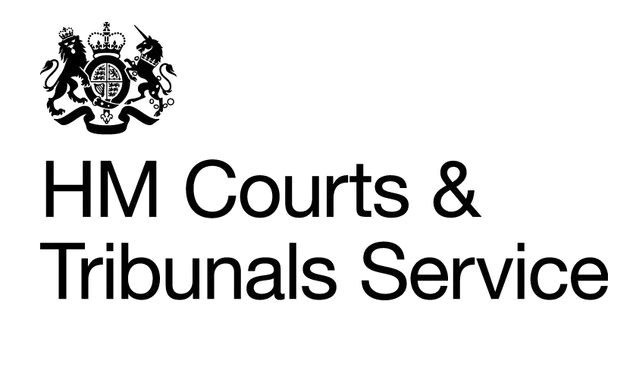




MAINTENANCE SCHEDULES
Carry out the right tasks at the right time with SFG20 maintenance schedules
Based on the SFG20 standard and tailored to each asset, SFG20 maintenance schedules are structured task lists that define what needs maintaining, how often, and by whom. Each schedule breaks tasks into clear steps, detailing priority, frequency, and the required skill level.
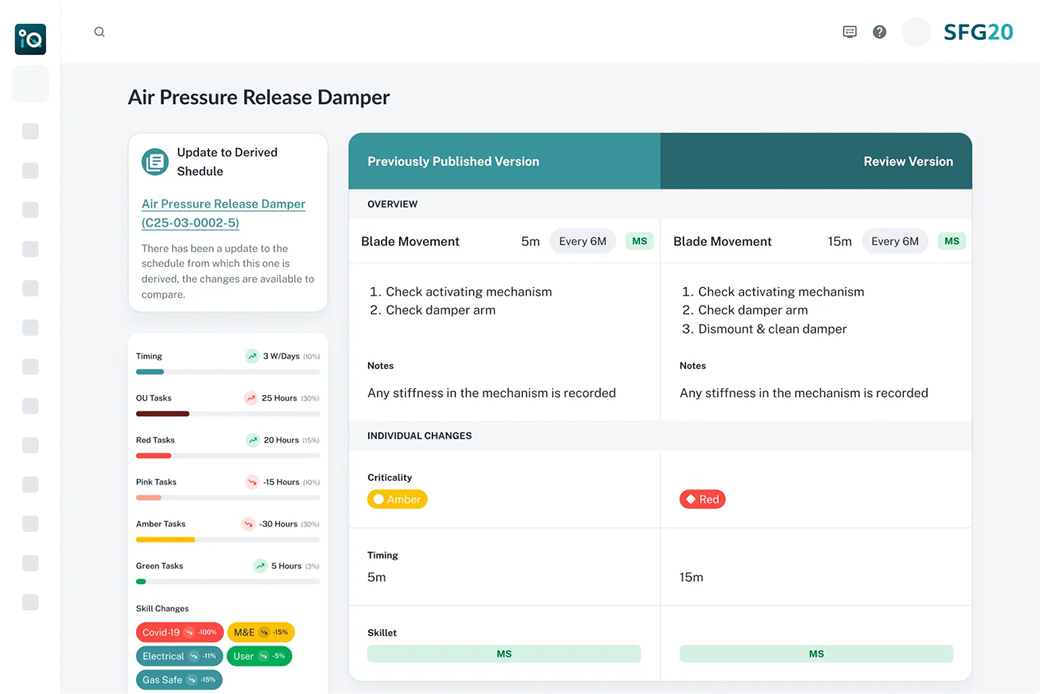
Features of a maintenance schedule:

EXPLORE MAINTENANCE SCHEDULES
Search or browse 1,500+ maintenance schedules
Search or browse over 1,500 schedules spanning every building type and asset, all mapped to legislation, best practice, and technical guidance.

[[ modalData.title ]]
[[ modalData.path ]]
[[ modalData.summary ]]
Statutory required tasks
Complete these tasks to ensure legal compliance. Mitigate risk, ensure safety and avoid penalties.
Industry best practice tasks
Keep operations running smoothly, minimise costly downtime, and optimise asset performance.
Why compliance matters
Compliance isn't optional—you're accountable for these [[ modalData.redTasks ]] risks. Here's why it matters:
-
Legal Action – Non-compliance can lead to criminal charges, including severe penalties and potential imprisonment.
-
Fines – Regulatory bodies issued over £43 million in fines to UK companies in the past year alone.
-
Safety Failures – Ignoring critical tasks risks lives, as seen in major incidents like Grenfell Tower.

View the tasks for this schedule
Book a demo today to explore this schedule, see how its tasks align with compliance requirements, and discover key software features that can save you time and money—no pressure, no wasted time.
THE SOFTWARE
Access maintenance schedules through Facilities-iQ
The SFG20 standard is accessed exclusively through our cutting-edge digital platform, Facilities-iQ. It gives you secure, digital access to the full library of maintenance schedules, always kept up-to-date in line with legislation, regulation, and best practice.
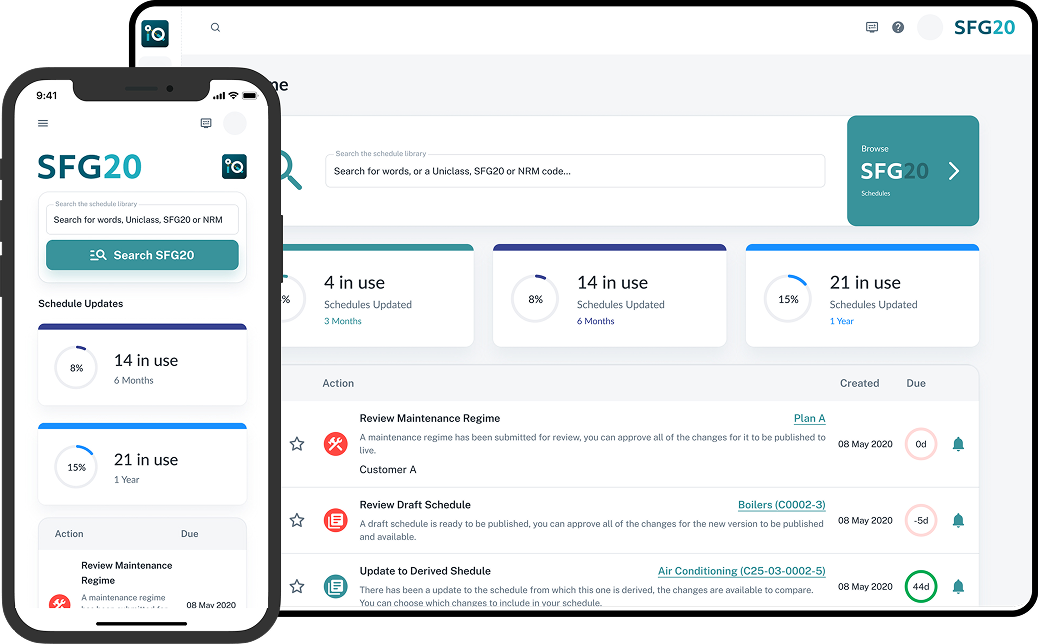
Access industry-standard maintenance schedules, automate update notifications, and seamless integration with your FM systems—all in one powerful platform.
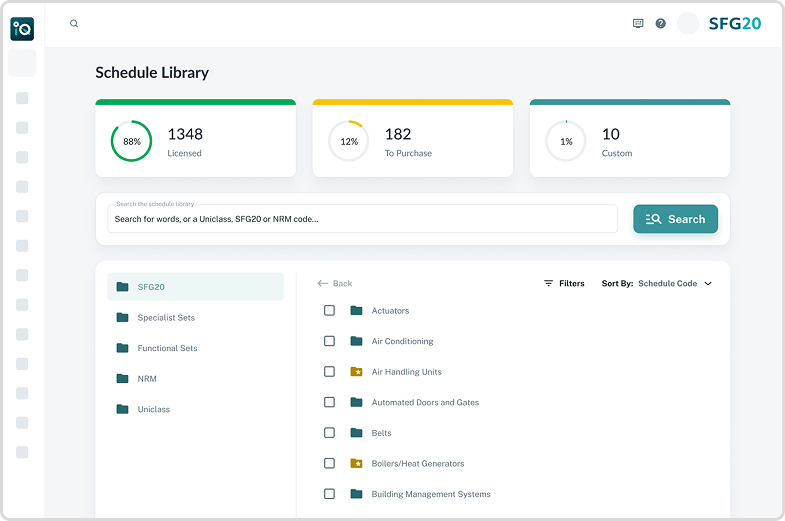
Access expert-written maintenance schedules tailored to your assets, workflows, and compliance needs.
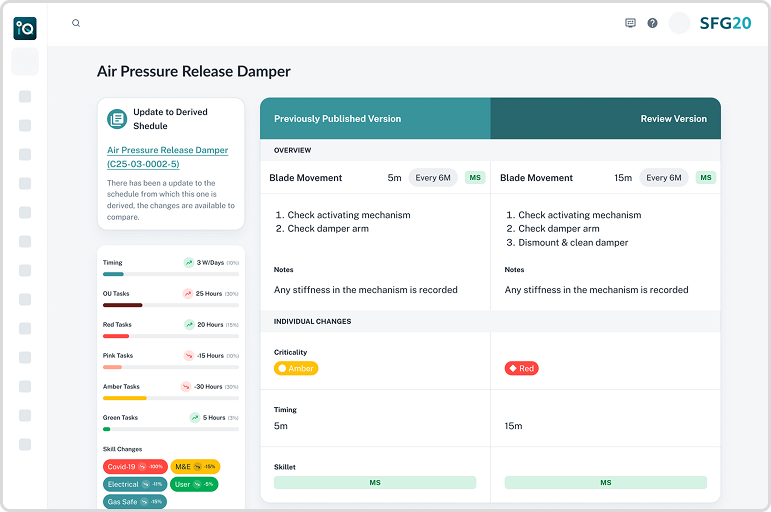
Stay compliant with real-time updates, reviewed and maintained by a team of technical experts.
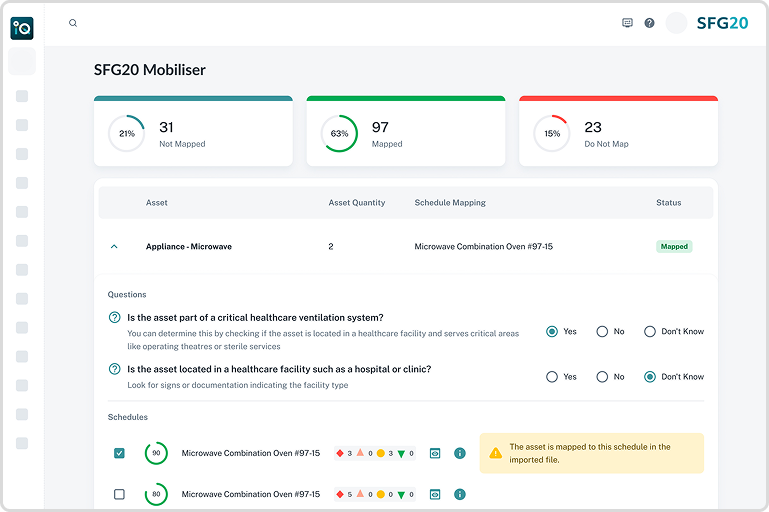
Import your asset register, then easily map, track, and manage your assets with precision.
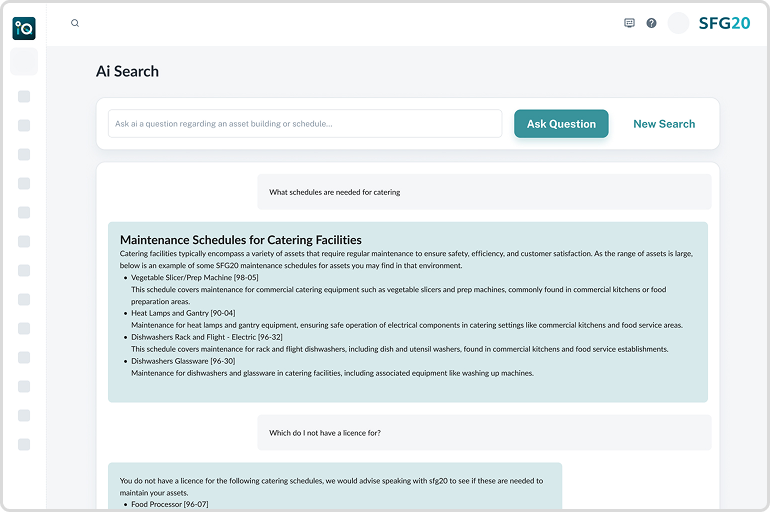
Find the exact maintenance schedule you need in seconds with intuitive filters and search options.
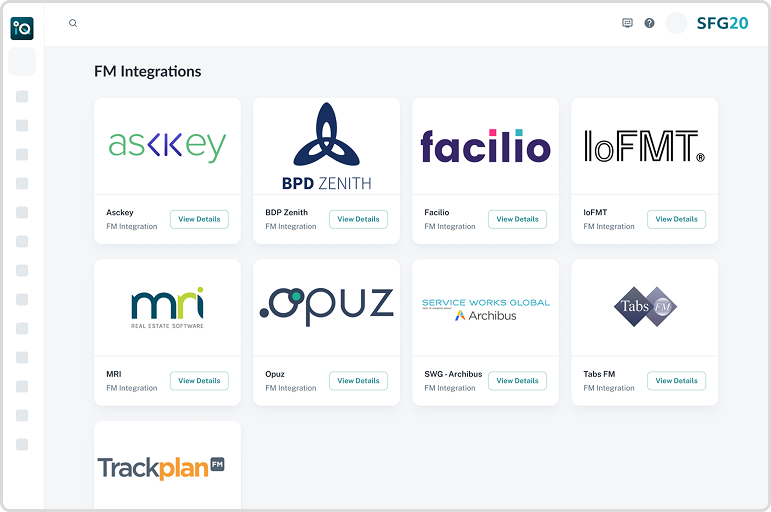
Sync your maintenance regime directly with your CMMS, CAFM, or IWMS to automate maintenance workflows.
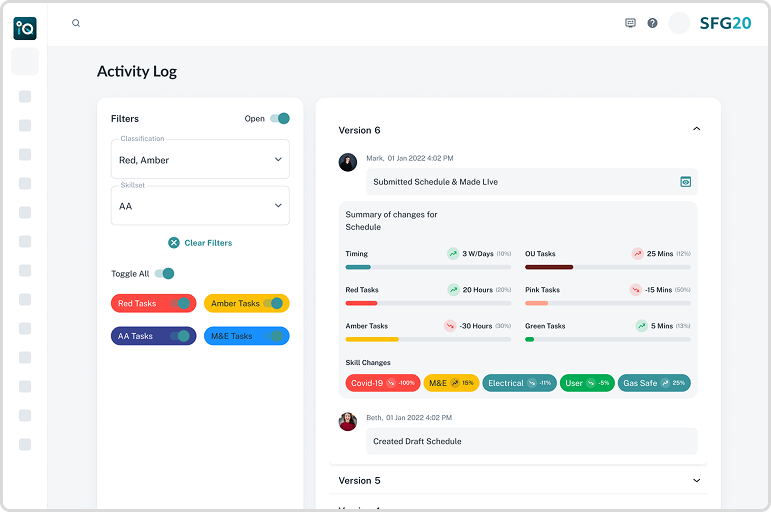
Keep an automated, transparent record of schedule updates to simplify compliance and reporting.
What you can do in Facilities-iQ:
BENEFITS
Build a compelling business case
SFG20 helps you do more than just meet your legal obligations, it helps you manage your entire estate more efficiently. Watch the free video below to discover how to save time, cut costs, and drive performance, all while staying compliant.
Here are 5 ways SFG20 customers save time and money
SFG20 maintenance schedules are built on the latest legislation and best practice. Updates are applied for you, so you can stay compliant without having to monitor changes manually.
- Avoid safety gaps and legal consequences
- Stay ahead of over 700 annual schedule updates
- Remove the risk of out-of-date internal guidance
Reduce waste, prioritise resources, and avoid unnecessary tasks.
- Focus only on tasks that are required — and skip what’s not
- Maximise asset lifespan with the right frequency of care
- Minimise unplanned repairs, replacements, and downtime
With structured schedules and built-in sharing, you eliminate duplication and reduce manual overhead.
- Stop researching legislation and writing task lists from scratch
- Share maintenance plans with clients or teams in one click
- Cut hours spent quoting, reviewing or reporting
SFG20 defines the level of skill needed for every task — helping you match jobs to in-house resource or contractors.
- Avoid over-reliance on external support
- Empower your team to do more, safely
- Reduce labour costs without compromising standards
Facilities-iQ integrates with your CAFM, CMMS and IWMS platforms, keeping your maintenance strategy up to date without manual input.
- Seamless API integration
- Automatic syncing of your accepted changes
- One source of truth across your systems
WHO WE HELP
Designed for facilities managers, building owners, contractors and consultants
Whether you own the asset, manage the work, or carry it out, SFG20 gives you the structure and clarity to do it right—from private contractors to public sector estates, and from a single site to a national portfolio.
As a Facilities Manager, you’re responsible for safe, compliant, and cost-efficient buildings, often with limited time and resources. SFG20 gives you ready-made maintenance schedules that reduce admin, cut costs, and simplify compliance.
Here’s how it helps:
- Improve accuracy of planning and budgeting
- Keep maintenance tasks on track and compliant
- Manage day-to-day safety and operational risk
- Prove compliance and meet legal responsibilities
- Oversee contracts and risk across your estate
- Benchmark maintenance for value and consistency
- Win more business, from tenders that require working to the SFG20 standard
- Follow defined schedules and statutory tasks
- Ensure your team meets all safety and skill requirements
- Create a maintenance strategy for your client aligned with the SFG20 standard
- Map SFG20 schedules to your client's asset register
- Stay on top of the latest legislative requirements
GUIDES & RESOURCES
Useful guides & resources

Top 6 benefits of achieving building maintenance compliance
This video outlines six key benefits of building maintenance compliance—showing it’s about more than just meeting legal requirements.
Watch now ›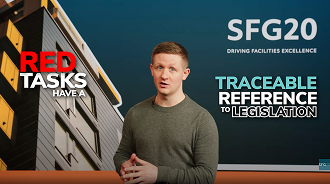
What is the SFG20 Colour Coding System?
This video explains how SFG20’s colour-coded system helps facilities managers prioritise maintenance tasks for compliance.
Watch now ›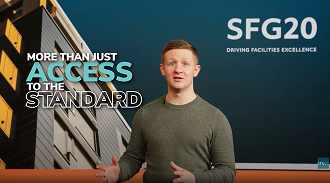
Facilities-iQ Product Tour
This video showcases how Facilities-iQ helps FM professionals access and manage the SFG20 standard through powerful, time-saving features.
Read now ›REVIEWS
Trusted by the UK's top facilities teams
SFG20 is rated “Excellent” on Trustpilot by building owners, facilities managers, FM consultants, and contractors.
“Always up-to-date with legal compliance...”
It helps to ensure that our maintenance procedures and tasks are always up-to-date with legal compliance across our whole estate.

National Estates & Facilities Technical Manager
NHS Blood and Transplant
“The knowledge we are doing things correctly...”
SFG20 has given us the knowledge that we are doing things correctly, as well as which tasks we have to focus on.

Sheffield Teaching Hospitals
NHS Foundation Trust
Mathew saved the cost of hiring an additional Compliance Officer (c. £50,000) and 20% of his weekly time.
“Significant cost savings...”
Significant cost savings realised by increasing the amount of work that is completed in-house versus contractors. We now have a consistent process and the ability to manage and control our risk across the estate.
Estates Compliance Manager
Ormiston Academies Trust
“Helps us to provide an exact specification of works.”
SFG20 is the cornerstone of how we put our proposals together. We never want to promise a service that we are unable to deliver, and SFG20 helps us to provide an exact specification of works.
Commercial Manager
Gratte Brothers
James estimates SFG20 saves him 20% on maintenance costs.
“Invaluable...”
The demands of most of our clients necessitate the use of SFG20. The SFG20 core library is constantly updated, which ensures the information is always available to keep us within the law and up-to-date with our statutory obligations.
Central Operations & Field Services
Serco
REQUEST A DEMO
Get in touch today
The agenda is yours—ask questions, get a pricing indication, or see how our platform's key features can save you time and money. It's quick, pressure-free, and entirely tailored to your needs.
We operate in GMT. If this doesn’t suit, contact us at sales@sfg20.co.uk or +44 1768 720736
FAQS
Frequently asked questions
SFG20 is the industry standard for building maintenance specification. It translates complex legislation and technical guidance into clear, structured maintenance schedules that help ensure compliance, reduce risk, and improve operational performance.
SFG stands for "Service and Facilities Group." This acronym encapsulates the core purpose and function of the SFG20 standard. It represents a systematic and structured approach to maintaining buildings and their assets, helping to ensure they remain safe, compliant, and in optimal working condition.
SFG20 was created in 1990 by the Building Engineering Services Association (BESA). Since its inception, it has been recognised as the industry standard for building maintenance specification. The standard comprises an extensive library of thousands of maintenance schedules, covering more than 70 equipment types.
SFG20 was established to provide a standardised approach to building maintenance, ensuring facilities management professionals have access to clear, compliant guidance for maintenance tasks, thus simplifying compliance with legislation.
Thousands of organisations across public and private sectors use SFG20 to ensure their buildings are maintained safely, legally, and efficiently, from healthcare estates and schools to housing associations and commercial contractors.
SFG20 helps organisations to achieve building maintenance compliance. By following SFG20 maintenance schedules and task guidance, users can focus their resources on completing statutory tasks and then take a risk base approach to the maintenance of their other assets. SFG20's team of technical authors stay on top of all legislation, regulations and best practice so you don't have to, saving you time and providing peace of mind.
SFG20 maintenance schedules contain tasks which are all colour-coded. Red tasks are statutory and should be completed to achieve compliance. Amber tasks are not required by law but, in many ways, are no less important and, by completing them, you will mitigate the risks of unexpected failure, leading to costly downtime.
Each SFG20 schedule breaks a task down into step-by-step actions, with priority level, frequency, timings, skill level, and safety notes — making it easy to understand what needs to be done, when, and by whom.
No — SFG20 is not a CAFM (Computer-Aided Facility Management) system. CAFM systems help you plan and manage work. SFG20 tells you what work needs to happen. It integrates with your CAFM, CMMS or IWMS to deliver the “what to do” side of the picture.
SFG20 integrates with all other FM systems, such as CAFM (Computer Aided Facilities Management), CMMS (Computerised Maintenance Management Systems) and IWMS (Integrated Workplace Management System). Think of SFG20 providing the 'what needs to be done' to the CAFM systems so they can go and plan the required work.
SFG20 is accessed via Facilities-iQ, which integrates seamlessly with all major FM systems. With over 700 updates made to the standard, Facilities-iQ ensures these are automatically available in your system, with simple notifications and a clear review-and-apply process. This removes the need for manual data entry, avoids the risks of outdated paper-based versions, and helps maintain compliance and operational efficiency.
SFG20 includes over 1,500 schedules spanning 70+ equipment types and building systems — from lifts, boilers and air conditioning to fire safety, catering equipment, and building fabric.
SFG20’s dedicated in-house team of qualified, experienced engineers reviews new legislation, technical standards, and best practices. They translate complex requirements into clear guidance for FM teams and engineers, revising and publishing updated content to help subscribers stay compliant. With over 700 updates made annually, it’s essential to check you’re working to the latest version of the standard to mitigate risk, avoid outdated practices, and maintain compliance.
Yes, SFG20 provides comprehensive training through its online Learning Lab, which includes easy-to-follow videos to help users understand and make the most of its features. SFG20 also has a dedicated training team that offers a range of options, from online instructor-led onboarding to bespoke in-person training tailored to your requirements.
Because it provides a trusted, comprehensive resource of legally aligned maintenance tasks—structured, colour-coded, and ready to use—for a building’s fabric, grounds, and internal assets.
.png?width=105&height=105&name=svgviewer-png-output%20(3).png)